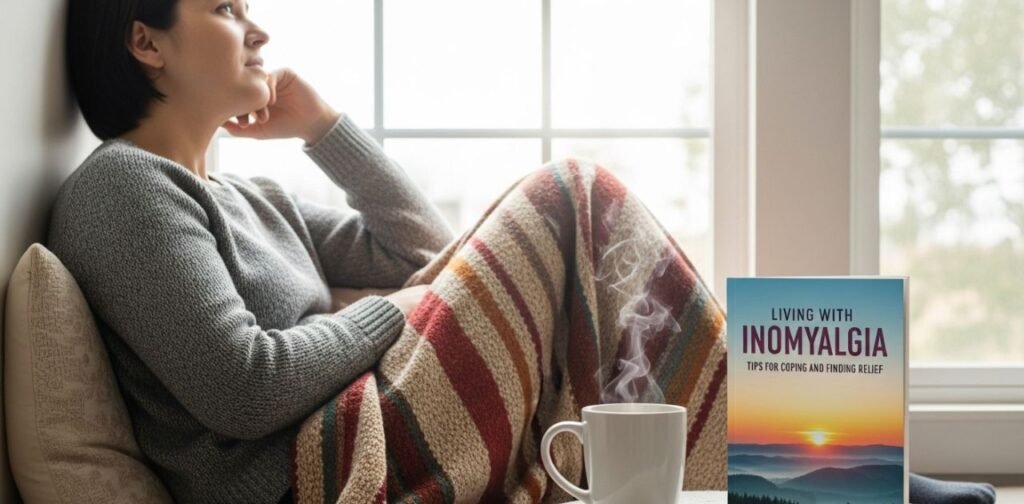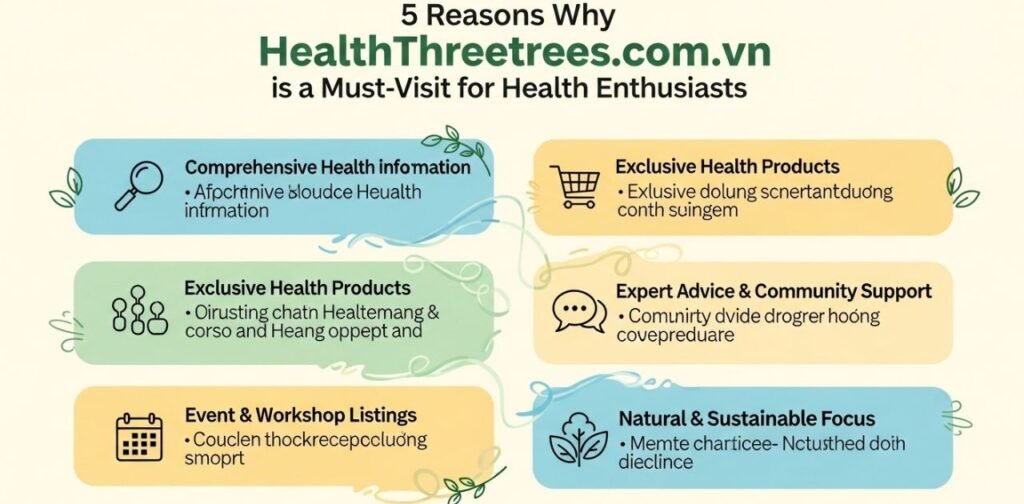Living with chronic pain can feel like navigating a labyrinth, especially when that pain stems from conditions like Inomyalgia. This often misunderstood disorder affects countless individuals, leading to fatigue and discomfort that can disrupt daily life. If you or someone you care about is grappling with this condition, finding ways to cope becomes essential.
In this blog post, we will explore the nuances of Inomyalgia—what it is, how it’s diagnosed, and most importantly, practical strategies for managing its symptoms. Whether you’re seeking medical treatments or lifestyle changes to improve your quality of life, there’s hope on the horizon. Let’s dive in together and uncover insights that may help lighten the burden of living with Inomyalgia.
What is Inomyalgia?
Inomyalgia is a complex chronic pain condition that primarily affects muscles and tissues throughout the body. Individuals with this disorder often experience widespread discomfort, fatigue, and emotional distress.
Unlike conditions with clear-cut causes, Inomyalgia presents challenges in diagnosis and treatment. Its origins are still being studied, making it a bit of an enigma for both patients and healthcare providers.
This condition can significantly impact daily activities. Tasks that once seemed simple may become daunting due to persistent pain or overwhelming exhaustion.
Living with Inomyalgia means navigating a unique set of symptoms that vary from person to person. Understanding its nature is the first step toward finding effective coping strategies and treatments tailored to individual needs.
Understanding Inomyalgia
Inomyalgia is a complex condition that often leaves those affected feeling frustrated and confused. It’s characterized by widespread muscle pain, fatigue, and tenderness in various parts of the body.
Researchers are still working to fully understand its origins. Some believe it may be linked to imbalances in brain chemistry or disruptions in how the nervous system processes pain signals.
This chronic condition can impact daily life significantly, making even simple tasks feel overwhelming. Emotional health is often intertwined with physical symptoms; anxiety and depression are common companions for many living with Inomyalgia.
Recognizing the nuances of this disorder is crucial for effective management. It’s not just about addressing pain; it’s also about understanding how it interacts with one’s overall well-being. Each person’s experience can vary widely, highlighting the importance of personalized care approaches.
Common Symptoms and Causes
Inomyalgia manifests through a variety of symptoms that can significantly impact daily life. One of the most common indicators is widespread pain, often described as a persistent ache throughout the body. This discomfort may be accompanied by fatigue that doesn’t improve with rest.
Many individuals also experience sleep disturbances. Insomnia or unrefreshing sleep can further exacerbate feelings of exhaustion and irritability. Cognitive issues, sometimes referred to as “fibro fog,” involve difficulties in concentration and memory.
The exact causes remain elusive, but several factors may contribute to its onset. Genetics could play a role, alongside environmental triggers such as infections or physical trauma. Stress is another significant factor; it tends to intensify symptoms and affect overall well-being.
Hormonal changes might also influence the condition’s severity, particularly in women during certain life stages. Understanding these aspects can help manage expectations and direct treatment approaches effectively.
Diagnosing Inomyalgia
Diagnosing Inomyalgia can be a complex process. It’s essential for individuals to consult healthcare professionals who understand the condition well.
Typically, doctors will review medical history and perform physical examinations. They may also run several tests to rule out other conditions that mimic its symptoms.
There isn’t a specific test for Inomyalgia; instead, diagnosis often relies on criteria established by medical guidelines. These include widespread pain lasting over three months without any identifiable cause.
Patients should prepare to discuss their symptoms in detail. Documenting daily experiences can provide valuable insights during consultations.
Open communication is crucial throughout this process. Building a strong relationship with your healthcare team helps ensure proper management of the condition moving forward.
Treatment Options for Inomyalgia
When it comes to treating Inomyalgia, a multi-faceted approach often works best. Healthcare professionals typically recommend a combination of medications and therapies tailored to individual needs.
Over-the-counter pain relievers like ibuprofen or acetaminophen can provide temporary relief. Prescription options may include antidepressants or muscle relaxants, which help alleviate symptoms and improve sleep quality.
Physical therapy plays a crucial role in recovery. Targeted exercises strengthen muscles while enhancing flexibility. Additionally, regular sessions with a qualified therapist can teach proper body mechanics to avoid strain.
Mindfulness practices such as yoga and meditation offer mental respite from chronic discomfort. These techniques foster relaxation and promote emotional well-being.
Complementary treatments like acupuncture might also aid in managing pain levels for some individuals. It’s essential to explore various avenues under the guidance of healthcare professionals to discover what truly helps you feel better.
Worth checking out: Shihuanuo
Lifestyle Changes for Managing Inomyalgia
Making small adjustments in daily routines can significantly impact life with Inomyalgia. Prioritizing sleep is essential. Aim for a consistent bedtime to improve restfulness.
Nutrition plays a critical role too. Incorporating anti-inflammatory foods like leafy greens, berries, and fatty fish may help manage symptoms. Staying hydrated is equally important; water supports overall health and reduces fatigue.
Engaging in gentle exercises such as yoga or walking can enhance physical well-being without overexertion. Listen to your body—rest when you need it, but also keep moving within comfort limits.
Mindfulness practices like meditation or deep breathing exercises can ease stress levels, promoting relaxation. Finding time for hobbies that bring joy also nurtures emotional health.
Creating a balanced schedule helps prevent burnout while ensuring necessary breaks are integrated throughout the day. Each of these changes contributes to improving quality of life while living with Inomyalgia.
Coping Strategies for Managing Inomyalgia Symptoms
Living with Inomyalgia can be challenging, but there are effective coping strategies to help manage symptoms.
First, establish a consistent routine. A regular schedule for work, meals, and sleep can bring structure to your day and minimize stress.
Mindfulness practices like meditation or deep-breathing exercises can also be beneficial. These techniques promote relaxation and help shift focus away from pain.
Engaging in gentle physical activity is another great strategy. Activities such as walking or yoga improve flexibility without overexertion.
Additionally, prioritize self-care by setting aside time for hobbies you love. This not only distracts from discomfort but also boosts mood.
Consider keeping a symptom diary too; tracking flare-ups may reveal patterns that you can address with lifestyle adjustments.
Don’t hesitate to reach out for support when needed—sharing experiences with others who understand can provide comfort and insight.
Alternative Therapies for Relief
Alternative therapies can offer valuable relief for those grappling with Inomyalgia. Many individuals find comfort in practices such as acupuncture, which may help reduce pain and improve overall well-being.
Herbal remedies also hold promise. Supplements like turmeric or ginger are known for their anti-inflammatory properties. However, it’s essential to consult a healthcare professional before trying new supplements.
Yoga and tai chi provide gentle movement that not only eases tension but promotes relaxation as well. These mindful practices encourage both physical flexibility and mental calmness.
Meditation is another effective tool. It helps manage stress levels that can exacerbate symptoms of Inomyalgia by fostering a sense of inner peace.
Many people explore chiropractic care too, seeking adjustments to relieve discomfort and enhance mobility. Each alternative therapy has its unique benefits; experimenting may lead you to the right combination for your needs.
Coping Strategies
Coping with Inomyalgia can be challenging, but practical strategies can make a difference. Start by establishing a daily routine that includes time for rest and self-care. This structure helps manage fatigue and promotes stability.
Mindfulness techniques, like meditation or deep breathing exercises, can help alleviate stress and enhance mental clarity. Even just five minutes of focused breathing can create a sense of calm.
Incorporating gentle physical activities such as yoga or stretching is beneficial too. These movements improve flexibility while reducing muscle tension.
Keeping a symptom journal may provide insights into triggers and patterns in your condition. Documenting how you feel daily allows you to share valuable information with your healthcare provider.
Don’t hesitate to reach out to friends or family when feeling overwhelmed. Simply talking about your experiences creates bonds that foster understanding and support.
Support Groups and Resources for Those Living with Inomyalgia
Support groups can provide a nurturing space for those navigating the challenges of inomyalgia. Connecting with others who understand your experiences fosters a sense of belonging and reduces feelings of isolation.
Many organizations offer resources tailored specifically to individuals living with this condition. Online forums allow for flexible interaction, enabling members to share insights at their own pace.
In-person meetings often create an opportunity for face-to-face support. Here, participants can exchange coping strategies and personal stories that resonate deeply.
Local hospitals or community centers sometimes host workshops focused on managing symptoms effectively. These gatherings not only educate but also empower attendees to take charge of their health journey.
Utilizing social media platforms can further enhance connection with others facing similar struggles. Groups dedicated to inomyalgia thrive online, making it easier than ever to seek advice and encouragement from peers around the globe.
Support Systems and Resources
Building a strong support system is essential for anyone living with Inomyalgia. Friends and family can offer understanding, but connecting with others who share similar experiences can be invaluable.
Consider joining local or online support groups focused on chronic pain and Inomyalgia. These communities provide a safe space to share stories, coping strategies, and resources. Many members have faced the same struggles you encounter daily.
Healthcare professionals also play a critical role. Finding a compassionate doctor familiar with Inomyalgia can make navigating your treatment options easier. Don’t hesitate to seek out specialists such as physical therapists or nutritionists who understand your condition’s complexities.
Additionally, educational resources are just a click away. Websites dedicated to chronic pain management may offer valuable insights into new therapies and research findings that could enhance your journey toward relief.
Here’s something related: Veganovies com
Conclusion
Living with Inomyalgia can be a challenging journey. The condition affects not only physical health but also emotional well-being. Understanding the symptoms and finding effective treatment options is crucial for managing day-to-day life.
Embracing lifestyle changes, such as regular exercise, a balanced diet, and stress management techniques, can make a significant difference. Exploring alternative therapies may provide additional pathways to relief.
Connecting with support groups offers an opportunity to share experiences and gain valuable insights from others facing similar challenges. Remember that you are not alone in this fight; there are many resources available to help navigate the complexities of living with Inomyalgia.
Finding what works best for you will take time and patience. Keep seeking solutions that enhance your quality of life while staying resilient through the ups and downs associated with this condition.



